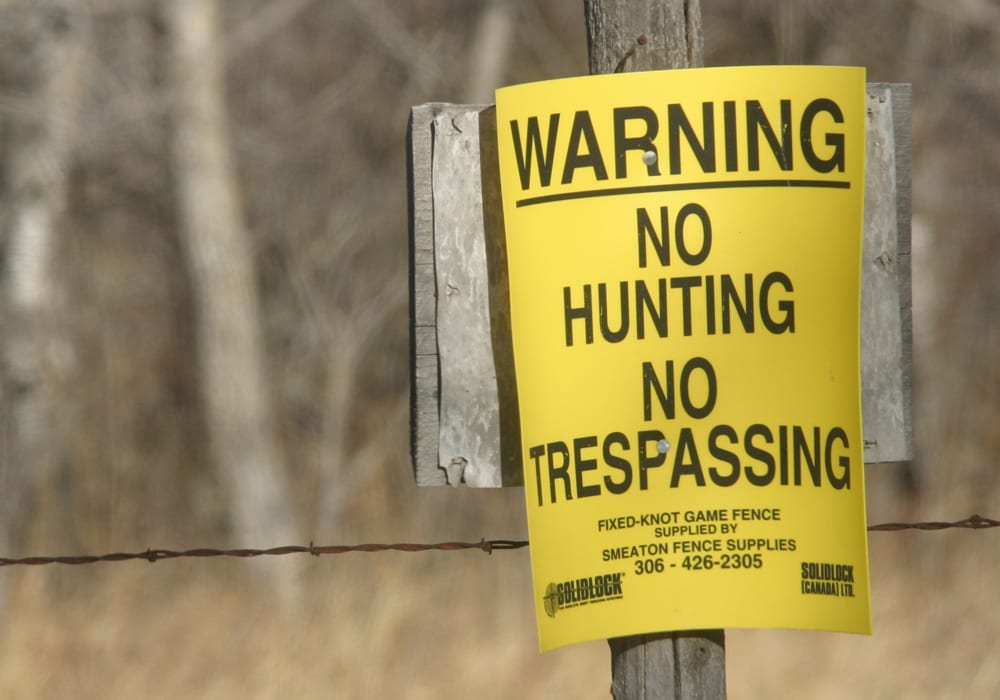The recent throne speech also addressed issues such as combatting rural crime and improving cellphone service
Rural Saskatchewan landowners are anxious to hear exactly what the government has in mind for new trespass laws.
The government consulted earlier this year and in last week’s throne speech to open the new session said legislation is coming “to better address the appropriate balance between the rights of rural land owners and members of the public.”
Premier Scott Moe said the consultation results will be made public, and the bill introduced after that, but he gave no definitive timeline.
Last spring, rural municipal councillors told the government they wanted hunters and others to be required to ask permission to enter land rather than have to post signs to keep them out.
Read Also

Saskatchewan dairy farm breeds international champion
A Saskatchewan bred cow made history at the 2025 World Dairy Expo in Madison, Wisconsin, when she was named grand champion in the five-year-old Holstein class.
Saskatchewan Association of Rural Municipalities president Ray Orb said the laws have to be stronger.
Too many landowners and farmers are reporting problems with people coming on to their property, he said.
“We’ve heard that there were over 2,000 individuals and organizations that were heard from,” Orb told reporters about the consultation.
He said SARM wants more enforcement and higher fines for trespassers.
“We believe that the laws should be stronger in Saskatchewan. We don’t believe that rural people should have to post their land for no trespassing or no hunting. We believe that those rural people have rights to privacy and we’re hoping that the province listened to us on those issues.”
Other agricultural organizations expressed similar thoughts.
Saskatchewan Stock Growers Association vice-president Kelcy Elford said its membership has passed a resolution calling for mandatory permission to be required when anyone accesses private property.
Ranchers who use crown land control access, so that would be included, he said.
“There’s biohazards to be considered, there’s privacy to be considered and animal welfare,” he said. “There have been problems in the past. We support a stringent access policy from this government.”
Todd Lewis, president of the Agricultural Producers Association of Saskatchewan, agreed that biosecurity is a huge problem.
“Clubroot, invasive weeds, even some of the viruses in the big herds as happened in Manitoba,” he said, referring to tuberculosis in cattle. “That’s all passed along by vehicles and visitors on your property. It’s just part of modern agriculture that we have to know who is on our land and when and why they’re there.”
Saskatchewan Cattlemen’s Association chief executive officer Ryder Lee also said that putting the onus on visitors to ask permission would be a step in the right direction.
Trespass law changes go along with an emphasis in the past year on addressing rural crime.
The throne speech promised amendments to the Police Act to allow RMs and communities of less than 500 people to join regional police services. Orb said that would likely come down to cost but is a welcome option.
“If adapting to a model like that would help we think that’s a great thing,” he said. “At the same time we want to make sure that we maintain our RCMP numbers in the province.”
He said nearly 100 of the province’s 266 RMs, and some rural communities, are establishing or reviving Rural Crime Watch efforts. Along with the Protection and Response Team created a year ago, these efforts are starting to make a difference.
The government noted that since the PRT began operating in April the highway patrol officers and conservation officers who were added to the team have attended nearly 1,300 calls, including 83 emergency 911 calls.
Other rural issues or concerns addressed in the throne speech include improving 4G LTE cellular service in 100 communities through small cell site solutions, changes to commercial driver training, and an intersection safety strategy to reduce collision potential at highway intersections.
















